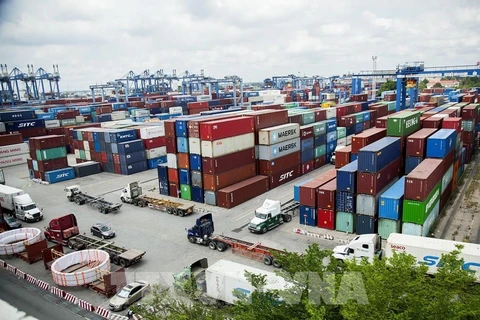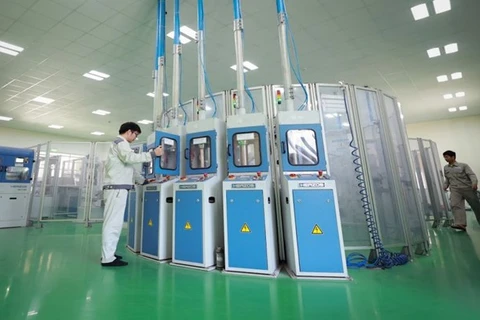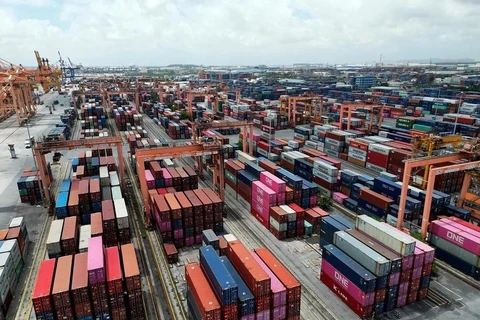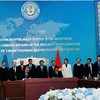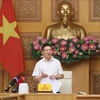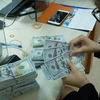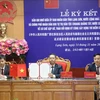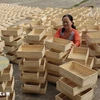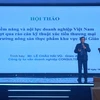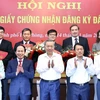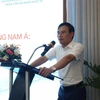
Hanoi (VNA) – International organisations have maintained their robust growth forecasts for Vietnam this year as the economy has bounced back strongly despite external uncertainties and extensive damage caused by Typhoon Yagi.
Robust economic outlook
The Asian Development Bank (ADB) projected a positive economic outlook for the country, forecasting its gross domestic product (GDP) growth at 6% in 2024 and 6.2% in 2025 in its September Asian Development Outlook (ADO) released on September 25.
“Vietnam’s economy showed robust recovery in the first half of 2024 and continues to maintain momentum despite global uncertainties,” said ADB Country Director for Vietnam Shantanu Chakraborty. “This steady recovery has been driven by improving industrial production and a strong rebound in trade.”
The industrial sector continues to be a primary driver of growth, with external demand for major electronics fueling production. Vietnam’s recovery has also been supported by a rebound in the services sector and stable agricultural output.
Inflation is expected to remain moderate at 4% for 2024 and 2025, although geopolitical tensions, including the conflicts in the Middle East, and between Russia and Ukraine could impact oil prices and potentially boost inflation, the bank said.
Meanwhile, the Hongkong and Shanghai Banking Corporation (HSBC) maintained its GDP growth forecast for Vietnam at 6.5% for both years, given that positive potential could offset the temporary economic losses caused by the super storm.
The country’s growth improved and surprised on the upside in the second quarter of 2024, rising 6.9% year-on-year. The manufacturing sector has emerged strongly from last year’s woes. The Purchasing Managers' Indexes (PMIs) have registered five consecutive months of expansion, while industrial production (IP) has registered a bounce-back in activity for the textiles and footwear industry as well.
This has supported robust export growth at a double-digit rate, with structural forces, such as expanding market access for Vietnamese agricultural produce, also underway.
Regarding inflation, HSBC experts said that price developments are turning more favourable in the second half of this year, as unfavourable base effects from energy have faded. An expected Fed easing cycle will also help to alleviate some exchange rate pressures.
Taking all these into consideration, the bank maintain inflation forecasts at 3.6% in 2024, well below the State Bank of Vietnam (SBV)’s target ceiling of 4.5%, while the figure for 2025 is 3%.
In its latest report, the Singapore-based United Overseas Bank (UOB) lowered its forecast for the Vietnamese economy to 5.9% from the previous prediction of 6% in 2024 after taking stock of Typhoon Yagi’s impacts, the country’s reconstruction efforts and a high comparative base from the second half of 2023.
Despite short-term disruptions caused by the typhoon, Vietnam’s long-term fundamentals remain solid, it highlighted.
The Singaporean bank also revised its projection of Vietnam’s GDP growth rate for next year to 6.6%, or 0.2% higher than its previous forecast.
Risks on the horizon
The ADO also spotlighted several downside risks that could slow the country’s growth momentum. External demand in major economies will remain weak, while geopolitical tensions and uncertainties related to the US presidential election in November could lead to trade fragmentation, adversely affecting exports, manufacturing activity, and employment.
Furthermore, weak domestic demand and gloomy global economic prospects will add to the uncertainties. The US Federal Reserve’s rate cuts together with similar moves from the European Central Bank may weaken Vietnam’s exports.
According to HSBC, the domestic sector is recovering more slowly than initially expected, with retail sales growth still below the pre-pandemic trend. Encouragingly, the government has put in place measures to support a wide range of domestic sectors that is expected to shore up confidence with time.
Other risks that the Vietnamese economy may encounter include the disastrous consequences of Typhoon Yagi, sudden fluctuations in the global energy prices, food prices and the recovery levels on global demand, particularly in Europe.
The UOB said the typhoon’s impact is expected to be felt more clearly in the northern region towards the end of the third quarter and the start of the fourth quarter, resulting in reduced output as well as damage to manufacturing, agricultural and service facilities.
Policy recommendations
ADB experts suggested Vietnam to bolster domestic demand through stronger fiscal stimulus measures such as accelerating public investment implementation while maintaining low interest rates. Coordinated policy measures are essential for the country’s economic recovery, given relative price stability and weak demand.
Vietnam’s monetary policy will continue to aim for both price stability and growth, despite limited policy space. However, the heightened risk of nonperforming loans due to continued regulatory relaxation on loan extensions limits the potential for further monetary easing. Any additional loosening of monetary policy should be closely coordinated with an expansionary fiscal policy, along with accelerating institutional reforms to support the economy.
ADB Chief Economist Nguyen Ba Hung said with a view to ensuring growth in 2024 and 2025, it is important to ensure macro-economic stability with a more balanced combination of monetary and fiscal policies, along with comprehensive reforms in state management.
External demand weaker than expectations requires measures to boost business, helping stimulate domestic demand, he said, adding the SBV should continue its flexible monetary policy to facilitate low-cost funding to support growth.
Regarding relief efforts after Typhoon Yagi, Hung held that the best mechanisms for reconstruction are to rely on insurance and budget support like public investment in post-disaster infrastructure building and agricultural production.
Along with the government’s aid package worth 350 billion VND (14.25 million USD), he recommended more attention to the insurance market, particularly specialised products for disaster risk management, and explained that insurance for assets, including public assets and crops, will help people and businesses quickly recover after natural disasters./.
